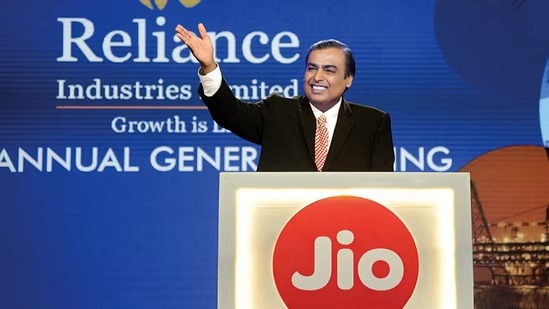@JUDGMENTTAG-ORDER
D. Hari Paranthaman, J.@mdashHeard both sides.
2. The petitioner/Management engaged the second respondent/Workman as a Casual Labourer between September 1992 and November 1995. While so, he was terminated from service on 14.11.1995. The workman took up the issue relating to his non-employment before the first respondent Labour Court in I.D.No. 52 of 1997. The Labour Court passed an Award dated 26.04.2000 reinstating the workman with backwages and continuity of service. The said Award was not questioned. The Management has reinstated the workman as a regular employee in Grade 4 with effect from 29.11.2003.
3. Subsequently, the workman filed C.P.Nos. 276 of 2000 and 938 of 2003 under Section 33-C(2) of the I.D.Act, claiming backwages from 14.11.1995 - the date of his termination upto 31.08.2003, since he filed the subsequent C.P.No. 938 of 2003 on 09.09.2003 and also claimed other attendant benefits as per the Award referred to above.
4. Both claim petitions viz., C.P.No. 276 of 2000 and 938 of 2003, were taken together and evidence was recorded in common. The workman examined himself as W.W.1 and he was cross-examined by the Management. The Management did not let in any evidence. On the side of the Management, only two settlements were marked while on the side of the Workman, 8 documents were marked as Exhibits.
5. After hearing both sides, the Labour Court passed a common order dated, 13.06.2007 and in C.P.No. 276 of 2000 and computed the amount payable to the workman at Rs.1,51,691.60 after adjusting Rs.50,000/- that was paid during the pendency of the Claim Petition. In C.P.No. 938 of 2003, the Labour Court computed an amount of Rs.3,21,479/-. Challenging the said order, these writ petitions are filed.
6. The main attack of the petitioner Management is that the computation made by the Labour Court based on the evidence given by the workman on the basis of wages paid to one Kasinathan is erroneous.
7. On the other hand, the learned counsel for the second respondent/workman has contended that the Management did not choose to let in contra evidence to the evidence of the workman. He has also taken me through the cross examination of the workman by the Management and submitted that it was not suggested by the Management that the claim by the workman based on the wages paid to Kasinathan is bad. In these circumstances, in the absence of any evidence, the Labour Court computed the amount as claimed by the workman/second respondent.
8. The learned counsel for the Workman has brought to my notice that the Management themselves filed a worksheet relating to the amount payable to the Workman and he has taken me through Para 15 of the affidavit filed in support of the writ petition and as per the said worksheet, the Workman is entitled to Rs.4,73,678/-.
9. I have considered the submissions made by the learned counsel on either side.
10. The learned counsel for the Management has not disputed about the worksheet given by the Management for a sum of Rs.4,73,678/- towards wages upto 31.07.2013, besides, a sum of Rs.1,30,030.15 towards notice pay, retrenchment compensation and gratuity. Paragraph 15 of the affidavit filed in support of the writ petition is extracted in this regard:-
"15. The second respondent in his written submissions inter alia referred to a calculation sheet presented by the petitioner during the hearing wherein a sum of Rs.4,73,678 was suggested for payment in full and final settlement of accounts, as against the claim of Rs.5,06,030 for the period and submitted that the first respondent may scrutinise both workings and direct the Management to pay whichever figure the first respondent thought was correct:-
The aforesaid offer made by the Management is not disputed by the learned counsel for the Management. Even in the affidavit filed in support of the writ petition, the offer made by the Management is not disputed.
11. As rightly contended by the learned counsel for the workman, the Management did not choose to let in any evidence to controvert the claim of the workman. Furthermore, even as per the statement of the Management, backwages upto 31.07.2003 alone comes to Rs.4,73,678/-. Since the writ petitioner/Management has failed to let in any evidence, I do not find fault with the order of the Labour Court in arriving at the amount based on the computation given by the workman. Further more, there is no much difference between the amount as computed by the Labour Court and the Management. I do not find any infirmity in the order of the Labour Court, particularly, when the Management failed to give any evidence in the claim petitions.
12. In these circumstances, I am not inclined to interfere with the order of the Labour Court.
13. For all the foregoing reasons, the writ petitions fails and the same are accordingly dismissed. During the pendency of the writ petition, the Management was directed to deposit Rs.3,29,542/- and hence, I am not inclined to go into the arithmetic of computation under Article 226 of the Constitution. Taking into account the aforesaid facts, it is also a futile exercise to remand the matter back to the Labour Court as pleaded by the learned counsel for the Management. The workman is permitted to withdraw the amount deposited by the Management. No costs. Consequently, connected miscellaneous petitions are closed.

